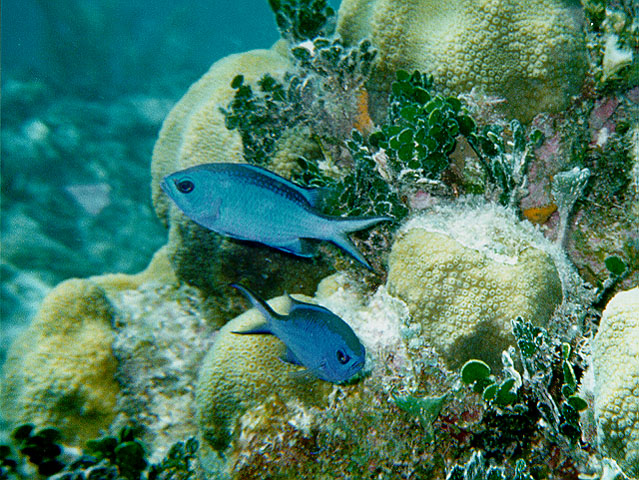| Pomacentridae (Damselfishes), subfamily: Chrominae |
| 15 cm TL (male/unsexed) |
|
reef-associated; marine; depth range 3 - 60 m, non-migratory |
| Western Atlantic: Bermuda, southern Florida (USA), and the Caribbean Sea. Including the Bahamas, Gulf of Mexico and Antilles (Ref. 26938). |
|
Dorsal spines (total): 12-12; Dorsal soft rays (total): 12-12; Anal spines: 2-2; Anal soft rays: 12-12. Body bright blue, scarcely paler below, with black stripe (Ref. 26938). Black margin on spinous dorsal fin, upper and lower lobes of caudal fin and front of anal fin; no black spot at pectoral base (Ref. 13442). |
| Adults are common above deep outer reefs and feeds in aggregations of the small zooplankton, primarily copepods (Ref. 13442). Often with creole wrasse. They retreat into coral crevices when frightened (Ref. 9710). Oviparous, distinct pairing during breeding (Ref. 205). Eggs are demersal and adhere to the substrate (Ref. 205). Males guard and aerate the eggs (Ref. 205). |
|
Least Concern (LC); Date assessed: 04 February 2009 Ref. (130435)
|
| harmless |
|
Source and more info: www.fishbase.org. For personal, classroom, and other internal use only. Not for publication.

